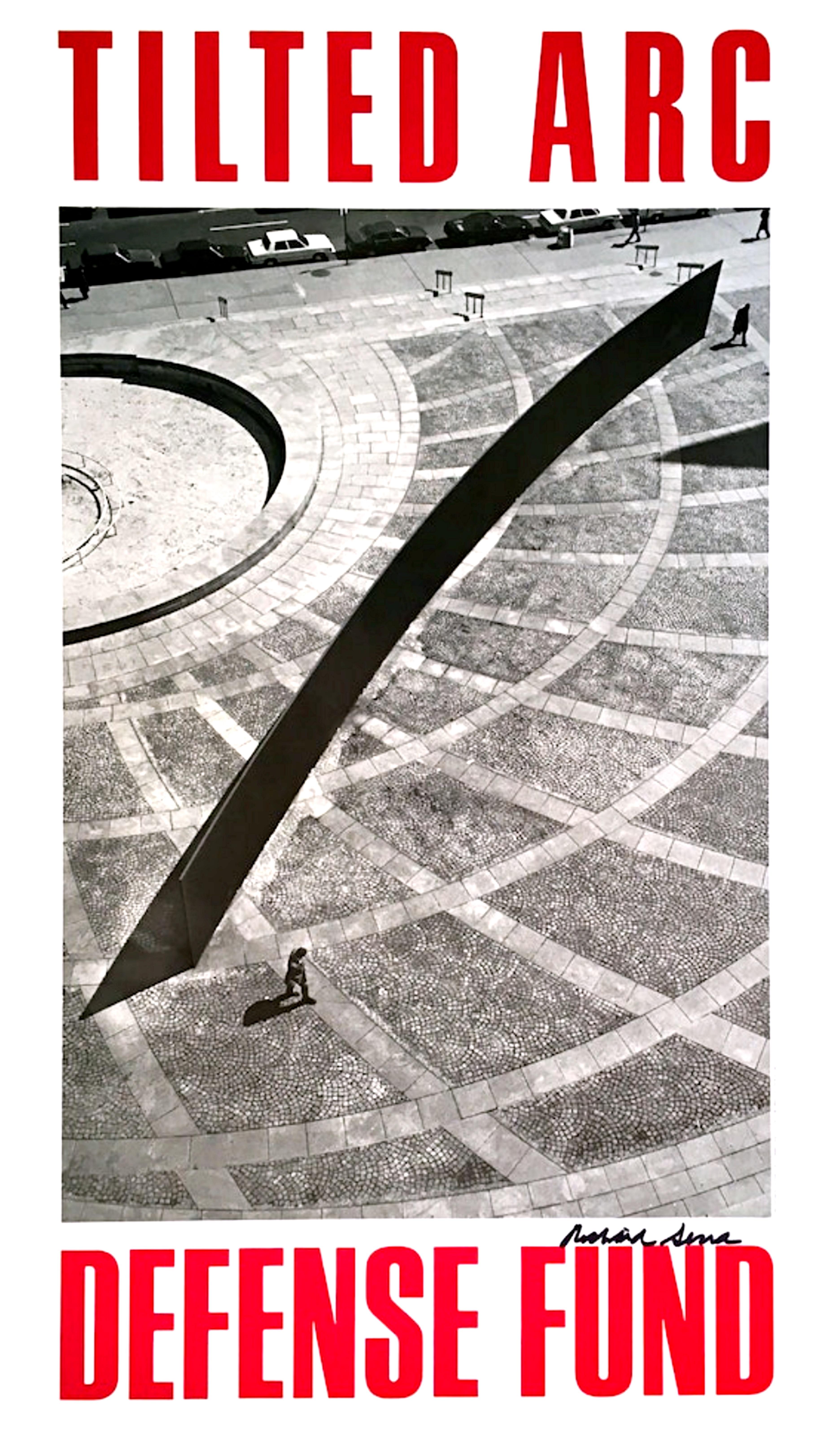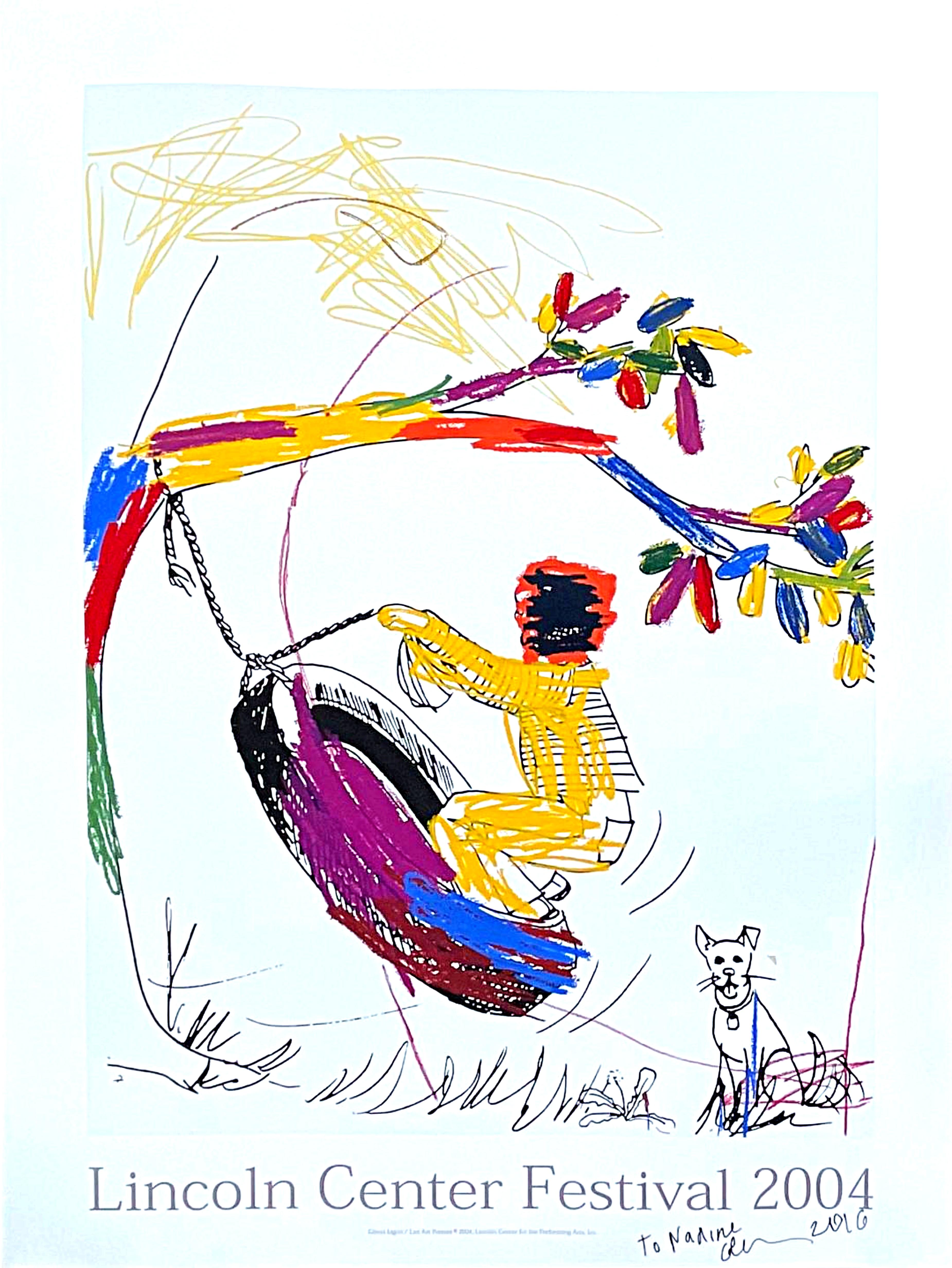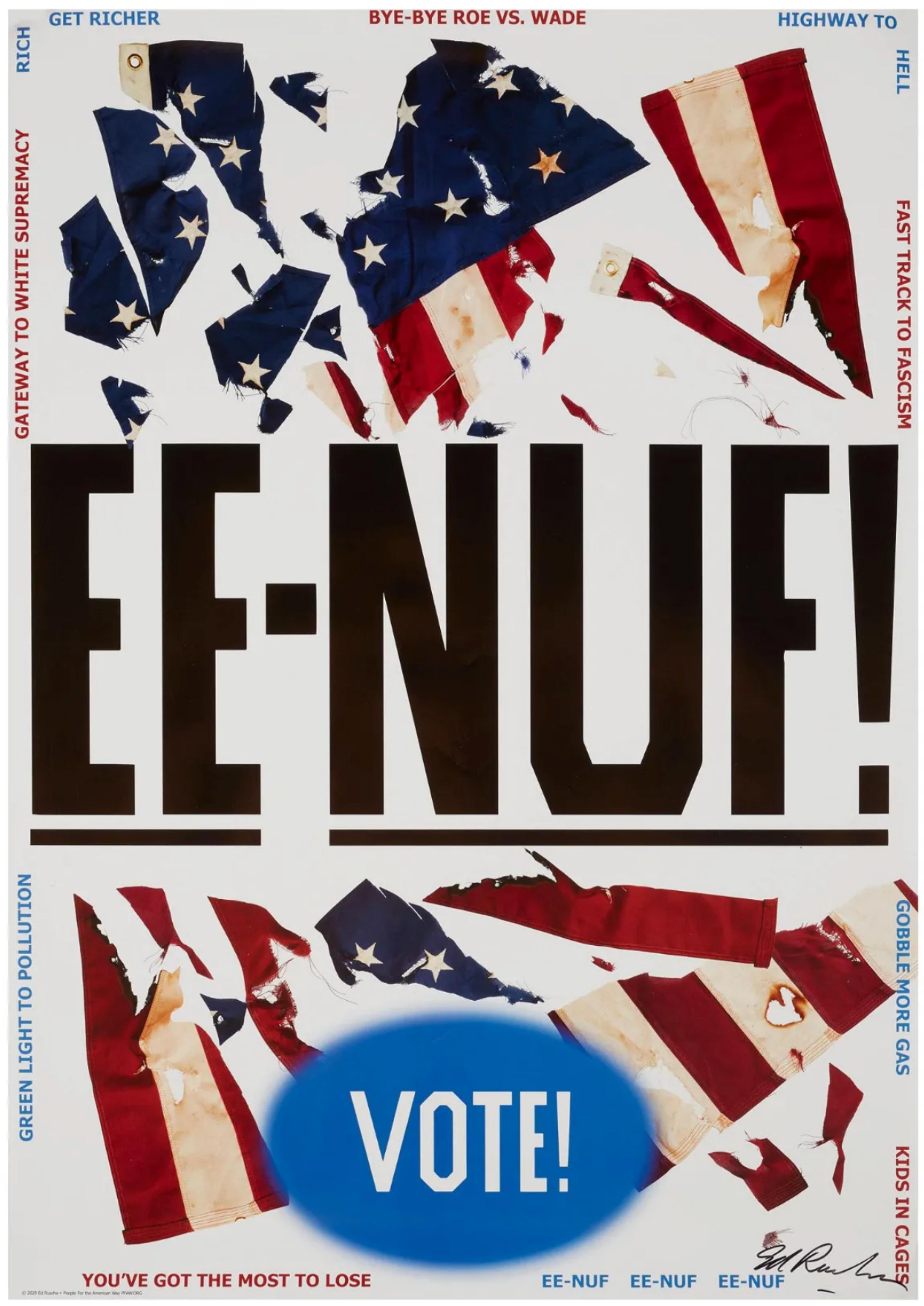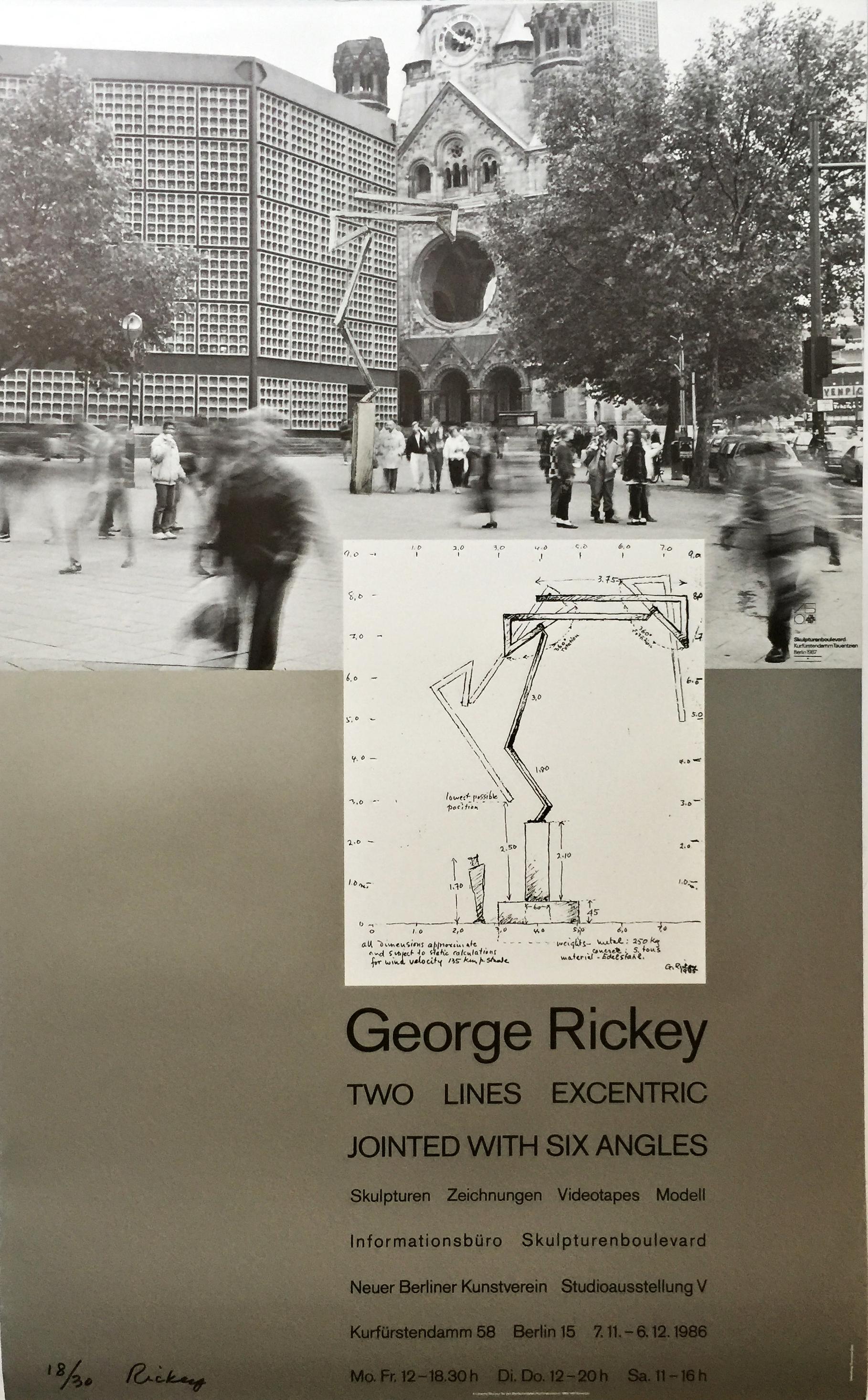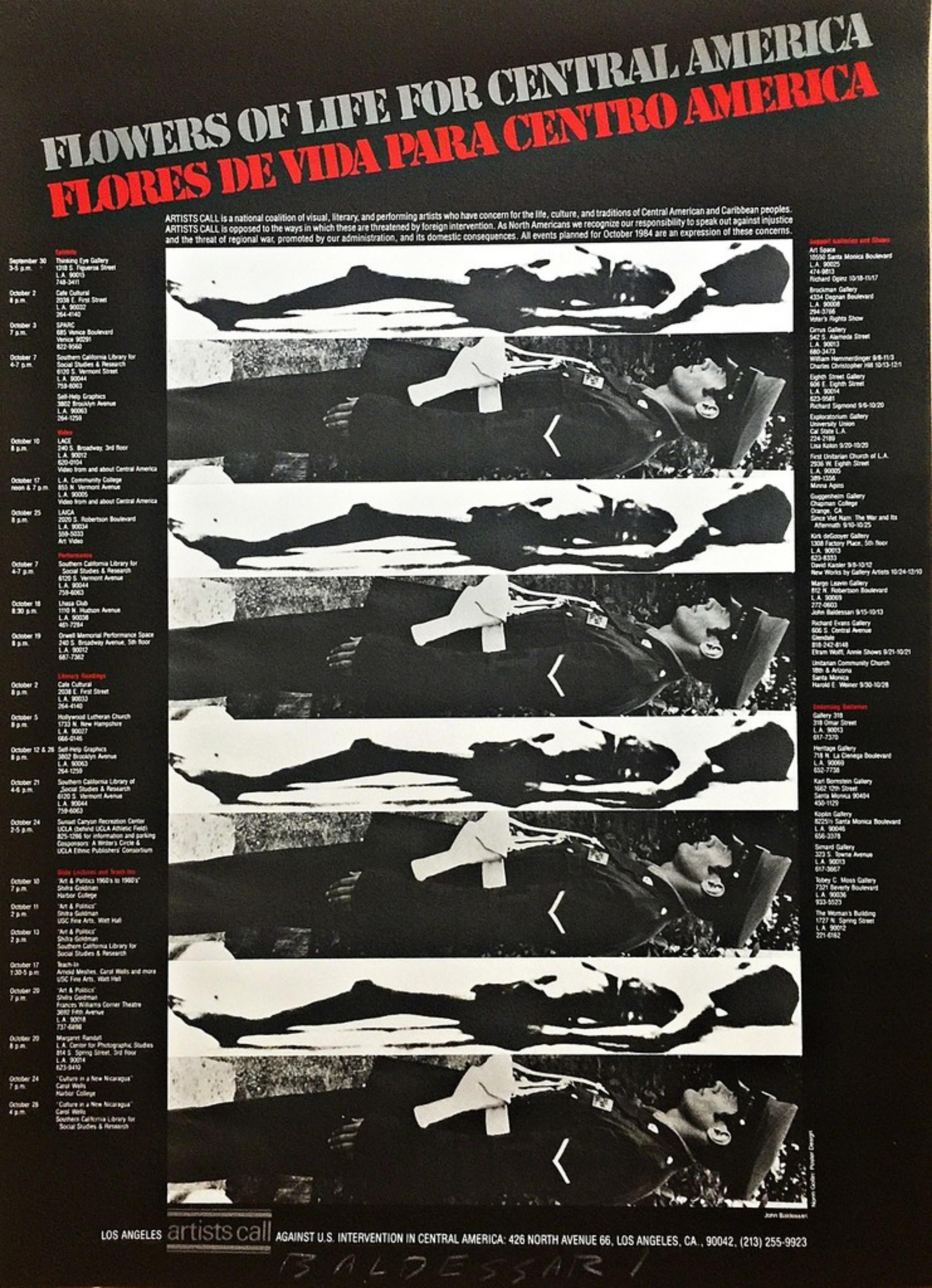Items Similar to Signed Card from exhibition TRACEY EMIN/EDVARD MUNCH: THE LONELINESS OF THE SOUL
Want more images or videos?
Request additional images or videos from the seller
1 of 8
Tracey EminSigned Card from exhibition TRACEY EMIN/EDVARD MUNCH: THE LONELINESS OF THE SOUL2021
2021
About the Item
Tracey Emin
Svart katt / Black cat (2008), from the exhibition TRACEY EMIN/EDVARD MUNCH: THE LONELINESS OF THE SOUL (hand signed), 2021
Offset lithograph promotional card (hand signed by Tracey Emin)
Boldly signed in black marker on the front
Frame included
This offset lithograph promotional card was produced by the Royal Academy in London in a limited edition of an unknown quanity on the occasion of the exhibition TRACEY EMIN/EDVARD MUNCH EXHIBITION: THE LONELINESS OF THE SOUL, 2021. The card depicts Emin's 2008 work "Svart katt / Black cat". It was issued unsigned; however, exceptionally, Tracey Emin hand signed the present work in black marker at White Cube Gallery. It has been elegantly framed in a museum quality wood frame with UV plexiglass.
Measurements:
Framed:
13.5 inches (vertica)l by 12.5 inches (horizontal) by 1.5 inches depth
Signed card:
7 inches (vertical) by 5.75 inches (horizontal)
Provenance
Card acquired from the Royal Academy and signed by Tracy Emin at White Cube Gallery
About Tracey Emin:
Self-portraiture and the nude run throughout her practice, which Emin has described as being about ‘rites of passage, of time and age, and the simple realisation that we are always alone’. Her earliest works refer to her family, childhood and chaotic teenage years, growing up in the seaside town of Margate and leaving home at the age of fifteen. What happened next is explored, in a manner that is neither tragic nor sentimental, in drawing, painting, film, photography, sewn appliqué, sculpture, neon and writing, as the vicissitudes of relationships, pregnancies and abortions intersect with her commitment to the formal disciplines of art. Most recently, the artist has experienced her body as a battleground, through illness and ageing, on which she reports with characteristic fearlessness.
The playful title of Emin’s first solo exhibition, My Major Retrospective 1963–1993, suggests the artist felt, despite being at the beginning of her career, significant things had already happened. Her obsessive assemblage of personal memorabilia included tiny photographs of her art school paintings that she’d destroyed, a ‘photographic graveyard’ that revealed an admiration for paintings by Egon Schiele and Edvard Munch. She details this ‘emotional suiside’ in Tracey Emin’s CV Cunt Vernacular (1997), among several early video works that give further insight into her formation as an artist, highlighting moments of epiphany through the use of first-person narrative. ‘I realised there was the essence of creativity, that moment of conception,’ she says in How It Feels (1996), a pivotal film in which she tells the story of her abortion. ‘The whole being of everything… it had to be about where it was really coming from’. Speaking to camera while walking through the streets of London, she concludes that conceptual art, as an act of reproduction, is inseparable from the artist’s inner life. Developing this connection, the haunting film Homage to Edvard Munch and All My Dead Children (1998) shows the artist on the pier near Munch’s house, naked and prostrate in the foetal position, the dawn rising over the water as she lifts her head and screams – a guttural response to great painter’s iconic image.
In 1998, Emin created My Bed, an uncensored presentation of her most personal habitat. The double bed has become abstracted from function as it sits on the gallery floor, in conversation with art history and a stage for life events: birth, sleep, sex, depression, illness, death. The accumulation of real objects (slippers, condoms, cigarettes, empty bottles, underwear) on and around the unmade bed builds a portrait of the artist with bracing matter-of-factness, defying convention to exhibit what most people would keep private. The work gained international attention as part of the Turner Prize, entering Emin into public consciousness. Another work that became a byword for her art of disclosure was the sculpture Everyone I Have Ever Slept With 1963−1995 (1995, destroyed 2004), where the names of all those she had ever shared a bed with – friends, lovers and family – were sewn on the inside of a tent, a crawl-space that invites the viewer to reflect on their own inventory.
Explicitly feminist, and acknowledging the influence of her friend and collaborator Louise Bourgeois, Emin’s choice of medium is integral to the story she tells. In hand-embroidered blankets and quilts, traditionally associated with women’s work, she pierces the visual field with words, combining scraps of different material with uneven stitching to spell out statements whose syntax and spelling remain uncorrected. With titles such as Mad Tracey from Margate. Everyone’s been there, (1997) or Helter Fucking Skelter (2001), they register the artist’s acute sensitivity to the views of those around her and give a riposte, just as the medium is a riposte to the classification of fine art, for centuries dominated by male artists. As she herself became newsworthy, both nationally and internationally, Emin used the publicity to prick other forms of decorum in the professional art world – such as never over-explaining. In longer form, her memoir, Strangeland (2005) offers an account of her journey to becoming ‘a fucked, crazy, anorexic-alcoholic-childless, beautiful woman. I never dreamt it would be like this.’ The text is riddled with spelling mistakes that challenge the form and carry through a sense of unfiltered process, as was also the case with her long-running newspaper column for The Independent (2005–09), in which she narrated her weekly goings-on under the title ‘My Life in a Column’.
Emin’s ongoing series of neons features snatches of text in her recognisable slanted handwriting, elevating fleeting thoughts and feelings as aphorisms: You touch my Soul (2020), I Longed For you (2019) or I don’t Believe in Love but I believe in you (2012). Her formulation of statements in the second person has the effect of placing the viewer squarely in the situation, and can encapsulate an entire romance in a pithy phrase, as in I want my time with You (2018), a twenty-metre-wide neon that greets passengers at London’s St Pancras Station. A critical part of her practice since the 1990s, the neons evoke the seafront lights of Margate, latent with the sense of dusk and faded glamour. Her birthplace is an abiding subject; it resurfaces in large-scale sculptures, where reclaimed wood and found materials are assembled in jagged structures that allude to the beach, pier, huts and tide markers. Margate’s famous theme park ‘Dreamland’ is referred to in several works, among them Self-Portrait (2001), which recreates the pleasure ground’s helter-skelter, and It’s Not the Way I want to Die (2005), which recalls the undulating roller-coaster in rickety, worn wood, fragile to the point of collapse. Margate is ‘part of me’, Emin says, and while looking back she is now looking to the future with the establishment of TKE Studios, a new art school and artists’ studios.
Questions of mortality and the centrality of the female reproductive body drive The Mother (2021), one of Emin’s most significant public sculptures. Permanently sited next to the new Munch Museum, Oslo, it marks the death of her own mother, and brings her lifelong admiration for Munch full circle. Fifteen tonnes of bronze standing nine metres high, this woman with ‘her legs open to the Fjord’ is visible from afar over land and water, a monument to the female figure as protector without compromising on her vulnerability or eroticism. By contrast, Baby Things, Emin’s accurate rendering of children’s tiny lost shoes and clothes in bronze, was installed as if by chance outside the British Pavilion at the Venice Biennale (2007) and around Folkestone Triennial (2008), intimate tokens that might inadvertently provoke a range of reactions, from fear for those we love most, to the indifference with which we treat a discarded object.
Most recently, Emin’s work has been charged by the seriousness of her medical situation, since in 2020 she was diagnosed with bladder cancer. Self-portraits taken on her camera phone in bed find the artist facing her ‘crippling’ insomnia in the small hours, and in recovery from extensive surgery. Her paintings of the nude figure have a tempestuous energy. Emin’s graphic line, by turn delicate or vigorous, imparts a sense of urgency; with each abandoned and assertive gesture, she is flaying herself open. Drips and obliterations point to the fluidity of the body, as it fluctuates between joy and suffering on its journey between birth and death. Explosions of colour allude to a self that is overcome by feeling and triumphing in sheer sensuality.
Tracey Emin was born in 1963 in London. She currently lives and works between London, the South of France, and Margate, UK. Emin has exhibited extensively including major exhibitions at Royal Academy of Arts, London (2020); Musée d’Orsay, Paris (2019); Château La Coste, Aix-en-Provence, France (2017); Leopold Museum, Vienna (2015); Museum of Contemporary Art, Miami (2013); Museo de Arte Latinoamericano de Buenos Aires (2012); Turner Contemporary, Margate, UK (2012); Hayward Gallery, London (2011); Kunstmuseum Bern (2009); Scottish National Gallery of Modern Art, Edinburgh (2008); Centro de Arte Contemporáneo, Malaga, Spain (2008); Art Gallery of New South Wales, Sydney (2003); and Stedelijk Museum, Amsterdam (2002).
In 2007 Emin represented Great Britain at the 52nd Venice Biennale and her installation My Bed has been included in ‘In Focus’ displays at Tate Britain with Francis Bacon (2015), Tate Liverpool with William Blake and also at Turner Contemporary, Margate alongside JMW Turner (2017). In 2011, Emin was appointed Professor of Drawing at the Royal Academy of Arts, London, and in 2012 was made Commander of the Most Excellent Order of the British Empire for her contributions to the visual arts.
Courtesy of White Cube
- Creator:Tracey Emin (1963, British)
- Creation Year:2021
- Dimensions:Height: 13.5 in (34.29 cm)Width: 12.5 in (31.75 cm)Depth: 1.5 in (3.81 cm)
- Medium:
- Movement & Style:
- Period:
- Condition:
- Gallery Location:New York, NY
- Reference Number:1stDibs: LU1745214179532
About the Seller
5.0
Platinum Seller
These expertly vetted sellers are 1stDibs' most experienced sellers and are rated highest by our customers.
Established in 2007
1stDibs seller since 2022
289 sales on 1stDibs
Typical response time: 1 hour
- ShippingRetrieving quote...Ships From: New York, NY
- Return PolicyA return for this item may be initiated within 1 day of delivery.
More From This SellerView All
- Tilted Arc Defense Fund (Hand signed by Richard Serra) from his own collectionBy Richard SerraLocated in New York, NYRichard Serra Tilted Arc Defense Fund (Hand signed by Richard Serra), 1985 Offset lithograph Boldly signed in black marker on the front (see photos) 38 × 22 1/2 inches Unframed This ...Category
1980s Contemporary Abstract Prints
MaterialsLithograph, Offset, Permanent Marker
- Lincoln Center Festival print (Hand signed, uniquely inscribed and dated)By Glenn LigonLocated in New York, NYGlenn Ligon Lincoln Center Festival (Hand signed, inscribed and dated), 2004 Offset lithograph on wove paper LARGE: 41 1/2 inches (vertical) × 32 inches (horizontal) (Ships in a tube measuring 36" x 6") Signed and inscribed to the present owner (Nadine) in ink lower front Published by the Vera List Art...Category
Early 2000s Contemporary Figurative Prints
MaterialsOffset, Permanent Marker, Lithograph
- Dodecahedron (Hand Signed Poster by Mark Ryden)By Mark RydenLocated in New York, NYMark Ryden Dodecahedron (Hand Signed by Mark Ryden), 2015 Offset Lithograph poster (hand signed by Mark Ryden) Hand signed by artist on lower right front for the present owner. 20 × 16 inches Unframed This Mark Ryden offset lithograph poster was published on the occasion of his exhibition at the Paul Kasmin...Category
2010s Contemporary Figurative Prints
MaterialsLithograph, Offset, Permanent Marker
- EE-NUF! Anti-Trump, pro-choice, anti-pollution poster (hand signed by Ed Ruscha)By Ed RuschaLocated in New York, NYEd Ruscha EE-NUF! (hand signed by Ed Ruscha), 2020 Color lithographic poster on wove paper (hand signed by Ed Ruscha) Boldly signed by Ed Ruscha in black marker on the front 32 1/4 ×...Category
2010s Contemporary Abstract Prints
MaterialsPermanent Marker, Offset, Lithograph
- Two Lines Excentric Jointed with Six Angles, Offset lithograph signed/N 18/30By George RickeyLocated in New York, NYGeorge Rickey Large: 39 inches (vertical) x 24.5 inches (horizontal) (Ships rolled in a tube measuring: 35 x 5) Two Lines Excentric Jointed with Six Angles, 1986 Limited Edition Offs...Category
1980s Kinetic Figurative Prints
MaterialsPermanent Marker, Lithograph, Offset
- Rarely seen limited edition Spanish/English protest poster, Signed by BaldessariBy John BaldessariLocated in New York, NYJohn Baldessari Flowers of Life for Central America/Flores de Vida por Centro America (Hand Signed), 1984 Rare Offset Lithograph (Hand signed by Baldessari) 24 3/5 × 18 inches Boldly signed in white sharpie by Baldessari lower front The regular, unsigned edition was only approx. 100, though the present work was, exceptionally, uniquely hand signed by the artist Extremely rare vintage political poster...Category
1980s Conceptual Abstract Prints
MaterialsOffset, Permanent Marker, Lithograph
You May Also Like
- Alexander Calder lithograph derrière le miroirBy Alexander CalderLocated in NEW YORK, NYAlexander Calder Lithograph c. 1967 from Derrière le miroir: Lithograph in colors; 15 x 11 inches. Very good overall vintage condition; well-preseved. Unsigned from an edition of u...Category
1960s Contemporary Figurative Prints
MaterialsLithograph, Offset
- Milton Glaser San Francisco Opera 1981 (Milton Glaser posters)By Milton GlaserLocated in NEW YORK, NY1980s Milton Glaser Poster Art: Milton Glaser San Francisco Opera: Vintage original Milton Glaser poster c.1981. Designed by Milton Glaser on the ...Category
1980s Contemporary Figurative Prints
MaterialsLithograph, Offset
- 1960s James Rosenquist F-111 announcementBy (after) James RosenquistLocated in NEW YORK, NYJames Rosenquist F-111 announcement: Vintage original folding exhibition pamphlet published on the occasion of a 1960’s exhibition in Stockholm at the Museet Moderna: September 29th-October 18th 1965. Features a reproduction of Rosenquist’s famed “F-111”. Folding out to four portions, the reverse chronicles an extensive interview (in Swedish) between Rosenquist & the museum. Rare and highly collectible. Medium: Offset printed fold-out museum pamphlet. Condition: Quattro fold-lines as issued; good overall vintage condition. Dimensions: 5.5 x 11 inches (opening to 5.5 x 44 inches). Unsigned from an edition of unknown; rare. Rosenquist began the painting F-111 in 1964, in the middle of the Vietnam War. He positioned his main subject, the F-111 military plane, which was in development at the time, flying through fragmented images of consumer products and references to war. Through its expansive network of colliding visual motifs, F-111 addresses the connections between the Vietnam War, income taxes, consumerism, and advertising. James Rosenquist was an American Pop artist known for his monumental paintings and prints. Often appropriating commercial imagery, his montage-like works combined popular culture, surrealism, and historical painting methods. “Much of the aesthetic of my work comes from doing commercial art,” the artist once said. “I painted pieces of bread, Arrow shirts...Category
1960s Contemporary Abstract Prints
MaterialsOffset, Lithograph
- Milton Glaser San Francisco Opera 1981 (Milton Glaser posters)By Milton GlaserLocated in NEW YORK, NYMilton Glaser Poster Art 1981: Milton Glaser San Francisco Opera: Vintage original Milton Glaser poster designed by Milton Glaser on the occasion of the San Francisco Opera's First ...Category
1980s Contemporary Figurative Prints
MaterialsLithograph, Offset
- Alexander Calder lithograph derrière le miroirBy Alexander CalderLocated in NEW YORK, NYAlexander Calder Lithograph c. 1971 from Derrière le miroir: Lithograph in colors; 15 x 11 inches. Very good overall vintage condition; well-preseved. Unsigned from an edition of u...Category
1970s Abstract Abstract Prints
MaterialsLithograph, Offset
- Milton Glaser San Diego Jazz Festival 1983 (Milton Glaser posters)By Milton GlaserLocated in NEW YORK, NY1980s Milton Glaser Poster Art: San Diego Jazz Festival: Vintage original Milton Glaser poster c.1983. Designed by Milton Glaser on the occasion of the San Diego Jazz Festival, a Pacific Coast event depicted with a suit-and-sandal clad bear at dusk. Several favorite Glaserisms show up here: the swirling contours, the loose cross-hatching and the saxophone. Offset lithograph poster in colors. 24x36 inches. Very good overall vintage condition with the exception of perhaps some minor signs of handling. A suit-and-sandal bear heralds this Pacific Coast event with a serenade with a beautiful sunset. Several favorite Glaserisms show up here: the swirling contours, the loose cross-hatching and the sax. Literature: Milton Glaser Posters Legendary graphic designer, illustrator, and art director Milton Glaser created some of the most recognizable iconography in America today —including the iconic I ♥ N Y logo —and countless posters and ad campaigns. Glaser changed the face of commercial art in the 1960s and ’70s, breaking with the conventions of modernism and drawing inspiration from a wide variety of art-historical and pop-cultural sources, from Art Nouveau to comic illustration...Category
1980s Pop Art Figurative Prints
MaterialsLithograph, Offset
